11 Sea Level Rise and Flooding
Threat Summary
Sea level rise
According to the Intergovernmental Panel on Climate Change, sea level is currently rising at an average of 3.2 mm per year, and this is projected to go up in the future. Seas are not rising uniformly, and there is variation based on global location[1]. Over the past century, the Global Mean Sea Level has risen by 4-8 inches or 10-20 cm. Sea level rise is caused by the thermal expansion of water as it expands with heat, the melting of glaciers and polar ice caps, and ice loss from Greenland and West Antarctica[2]. Where this puts us by the end of the century is only speculation, and projections vary widely based on emissions scenarios and potential environmental feedback loops that set temperature rise in motion at a greater speed than the current trajectory. Regardless of the speed of sea level rise, the fact is that CO2 emissions are at their highest level in 66 million years [3] , and this leads us to expect more warming, melting of ice, and expansion of water. So we’d better be ready.
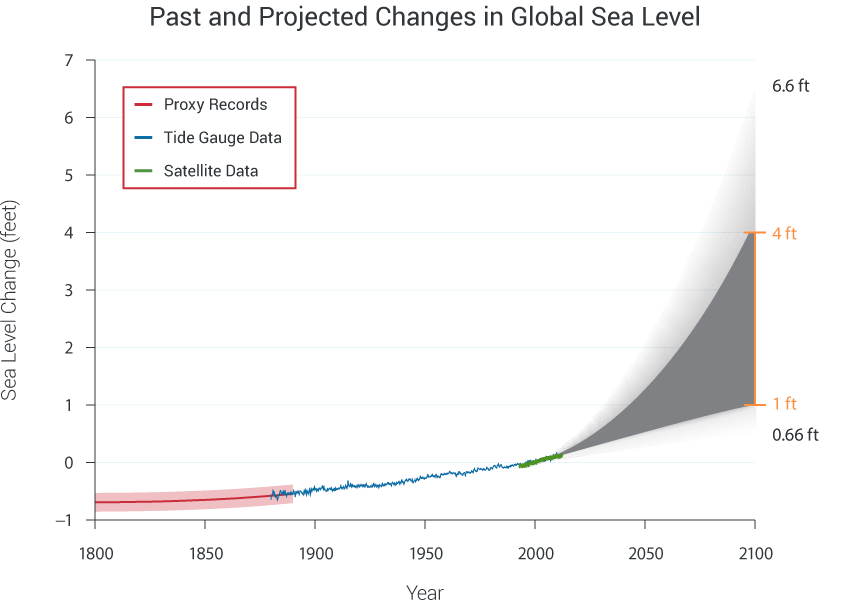
Figure 75 shows the projected average sea level rise of 4 feet or 1.2 meters by the end of the century, but that number is misleading for a number of reasons. Firstly, it is an average, which means it will be higher in some areas and lower in others. Second, this doesn’t account for the natural fluctuation of tides and the effects of the moon. So what happens when there’s a simultaneous high tide, full moon, and storm surge? That could be a number significantly greater than 4 feet for particular locations at particular times.
Regarding coastal flooding, many of the issues are the same as they are for storm surge that was discussed earlier in this text. The fact is that oftentimes major cities and prime agricultural areas have been developed around deltas and on floodplains because of the soil fertility, plentiful water, and ease of transport. So there are many agriculturally, economically, and ecologically important areas that are vulnerable.
Even though seas have risen modestly up to this point, to a marginal farmer in Bangladesh growing rice in a delta at the edge where freshwater meets salt water, 8 inches is a considerable amount. The problem is not just the fact of high tide waves overtopping levees and flooding rice paddies. It is the infiltration of salt water subsurface into the root zones of plants located on those edges[4].
When we examine the maps that show both population density as well as elevation above sea level, the issue is clearly a global one, where there is overlap between high population density and low elevations. These are the areas of greatest impact and vulnerability to sea level rise.

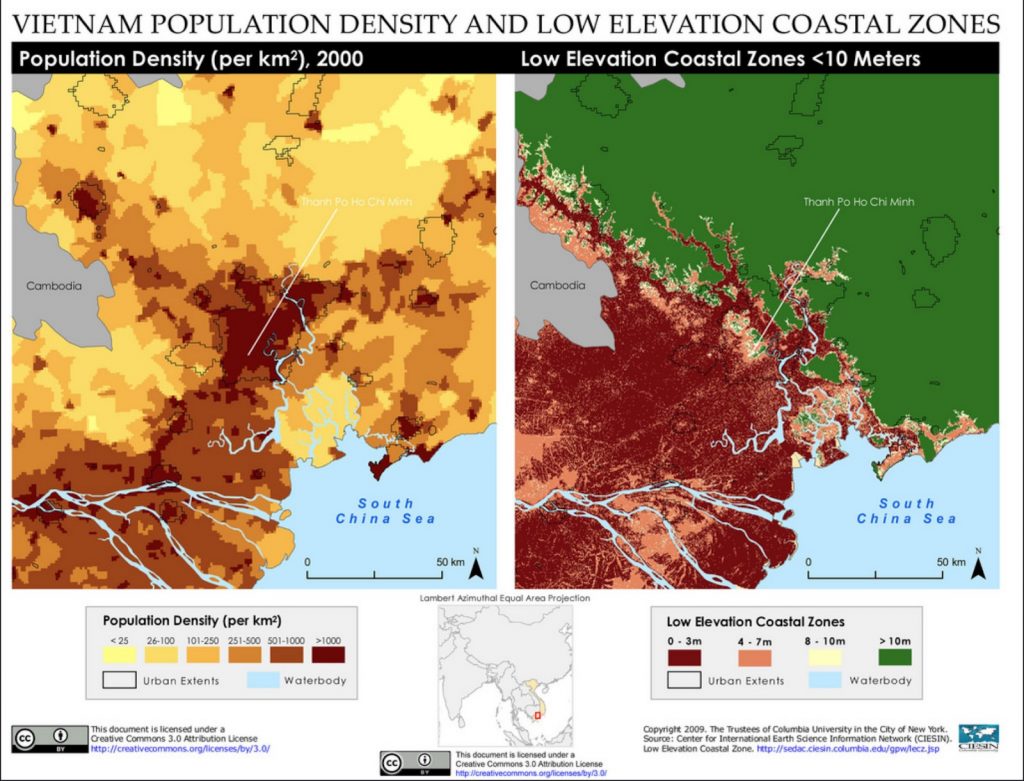
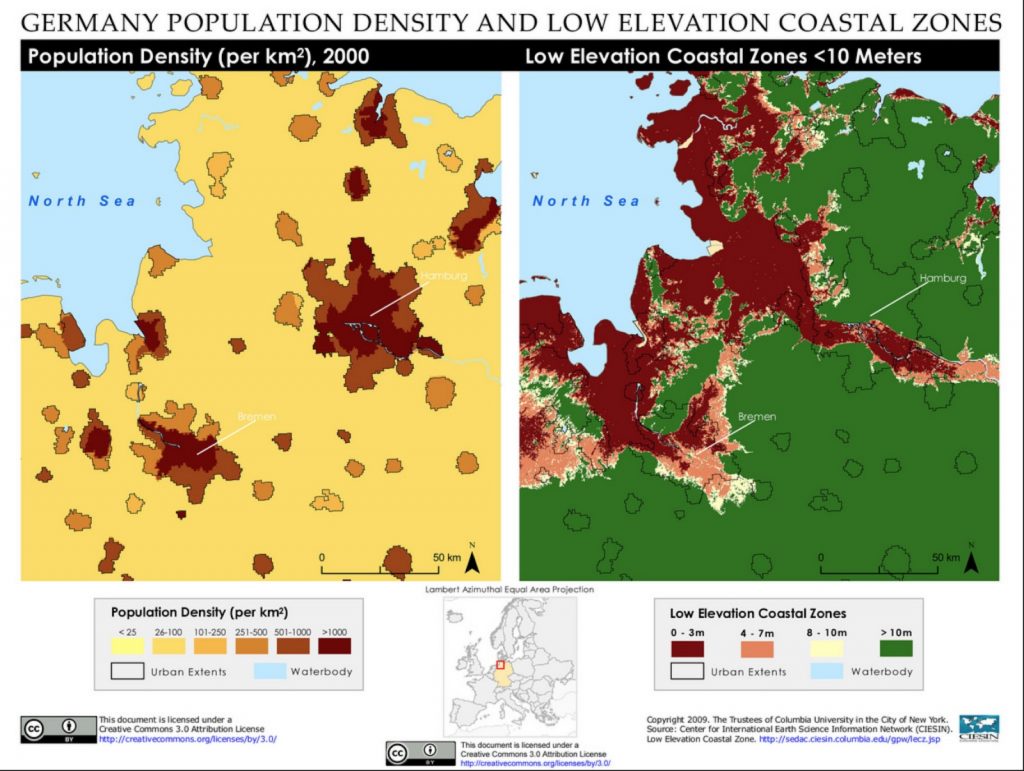
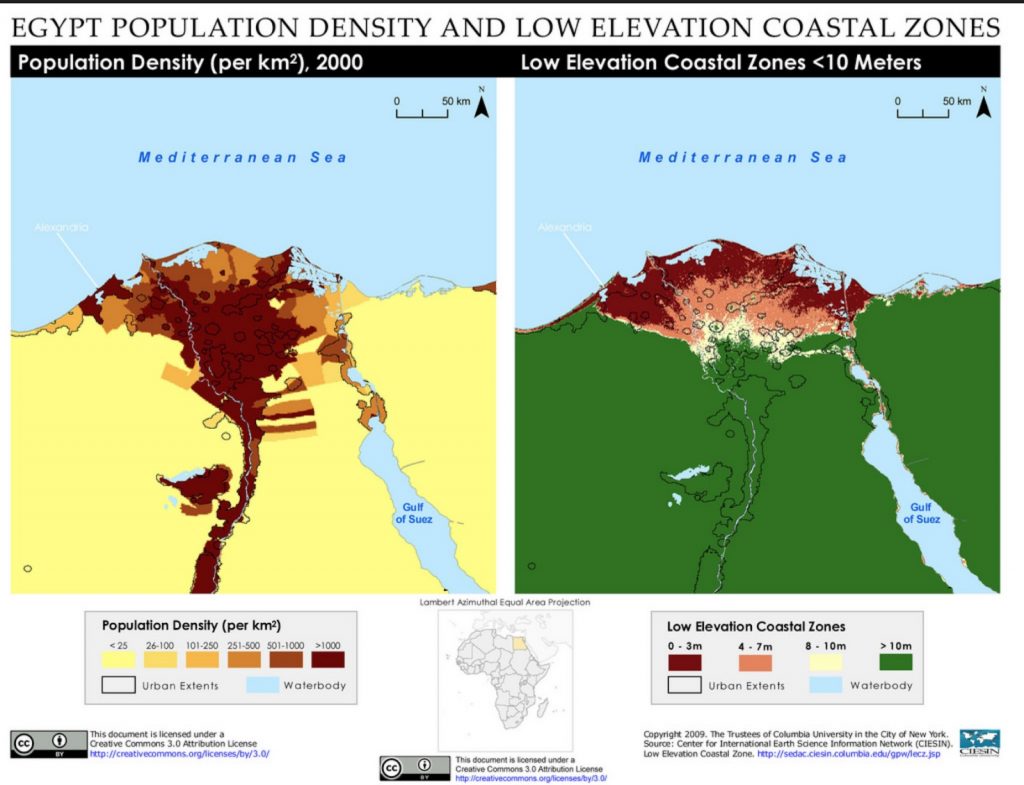
Aside from the impacts on agriculture and housing, there are critical infrastructure elements often located at the water’s edge. Wastewater treatment facilities are naturally located at the bottoms of watersheds where water can be collected by gravity, treated, and then discharged into a body of water. This makes these systems particularly vulnerable to sea level rise, as intrusion of saltwater into the biologically active treatment medium can undermine its functionality.

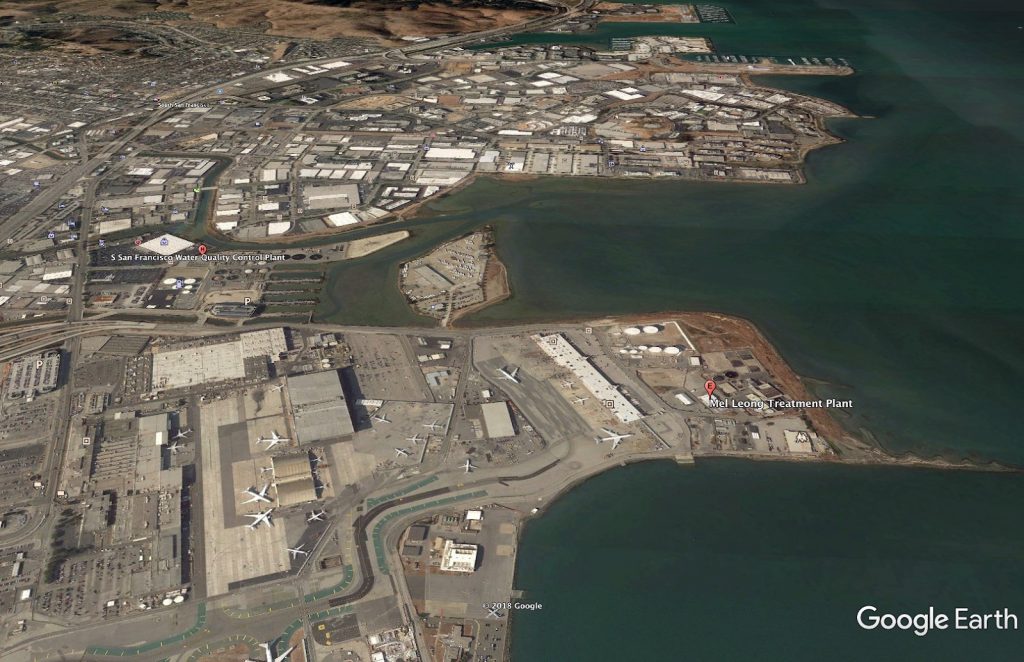
Flooding
Previously in this text, we examined the effects of flooding around erratic rainfall events in dry climates and flood events caused by tropical cyclones. Heavy precipitation is increasing, and this increase is leading to greater and more frequent flood events than throughout previous history.

Flooding has the most profound effects on lowlands as the water moves down and concentrates in floodplains, so assessing the location of a site within 100 and 500 year floodplain maps will help to reveal the magnitude of the danger. When heavy rains fall on unstable slopes, landslides are also a risk. Talking to local elders about their recollection of historic flood events can also provide a vision of what to be prepared for.
Site Mitigation Plan
In this next section, the topics of the site mitigation plan, extreme event survival, and recovery are all wrapped into one. This is because sea level rise is less of a singular disaster event like a cyclone or wildfire to recover from. It is more of a permanently changing condition that can be temporarily designed for as sea levels rise to a particular elevation range. Adaptations may get successively swamped over time, leaving a permanent state of retreat and redesign in low lying coastal regions.
As a steward of land that is currently or will be affected by sea level rise or increased flooding, there are a number of coping strategies that can be employed to keep areas productive in the near term. As was stated previously, the seas will continue to rise and migration will be the eventual destiny of many people in low lying areas. But for now, adaptations to the gradual rise of waters can be made.
For some endeavors, simple adaptations can be made to vulnerable structures like these beehives on risers in Key West, Florida, USA built by Keez Beez, where high water can just pass right under the hives without incident.

Structures
In places throughout the world, the architecture is already suited to fluctuating water levels, and there are many examples of stilt houses that can be found in wet ecosystems throughout the planet. Often times it is poorer people who are forced to inhabit the tenuous margins.

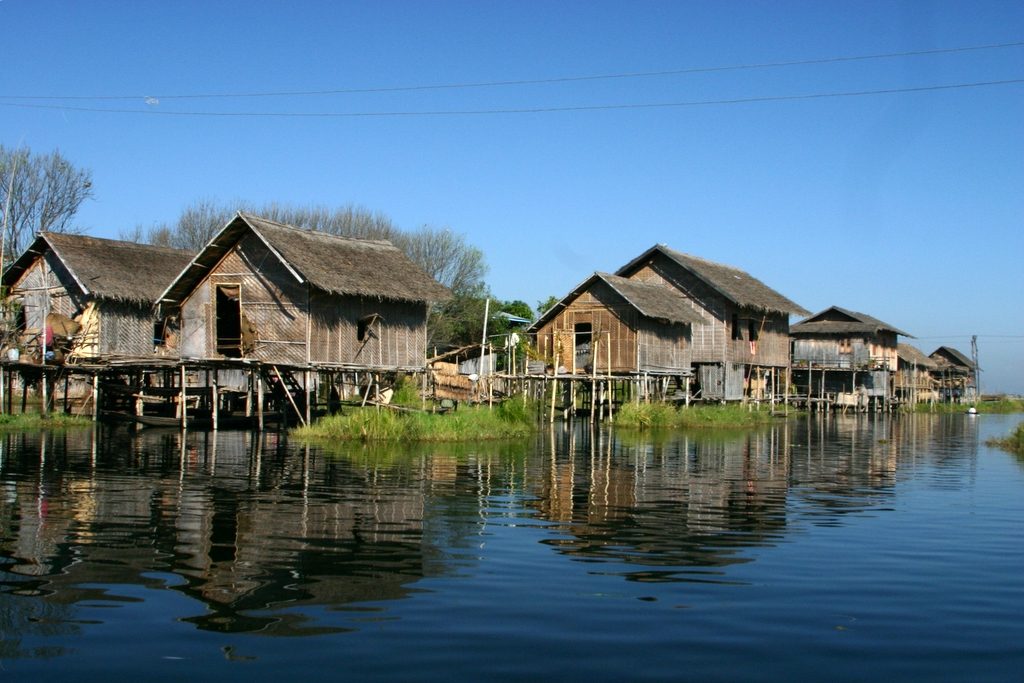
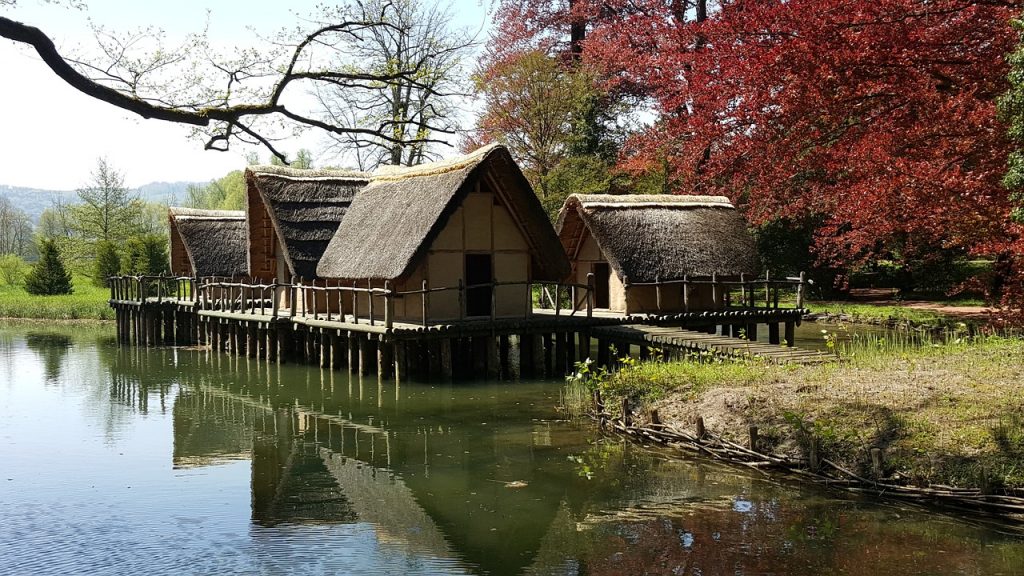
Floating houses are also popular throughout the planet as well on the edges of water and land. The systems on a houseboat can be degenerative or regenerative, depending on the design. A former permaculture student of mine created an off the grid houseboat that he floated in the highly polluted Gowanus Canal in Brooklyn, New York, where he harvested rainwater, produced electricity, composted humanure and other wastes, and treated his wastewater on site using an miniature wetland system. He grew food on the decks and heated in winter with scrap wood collected in the city.
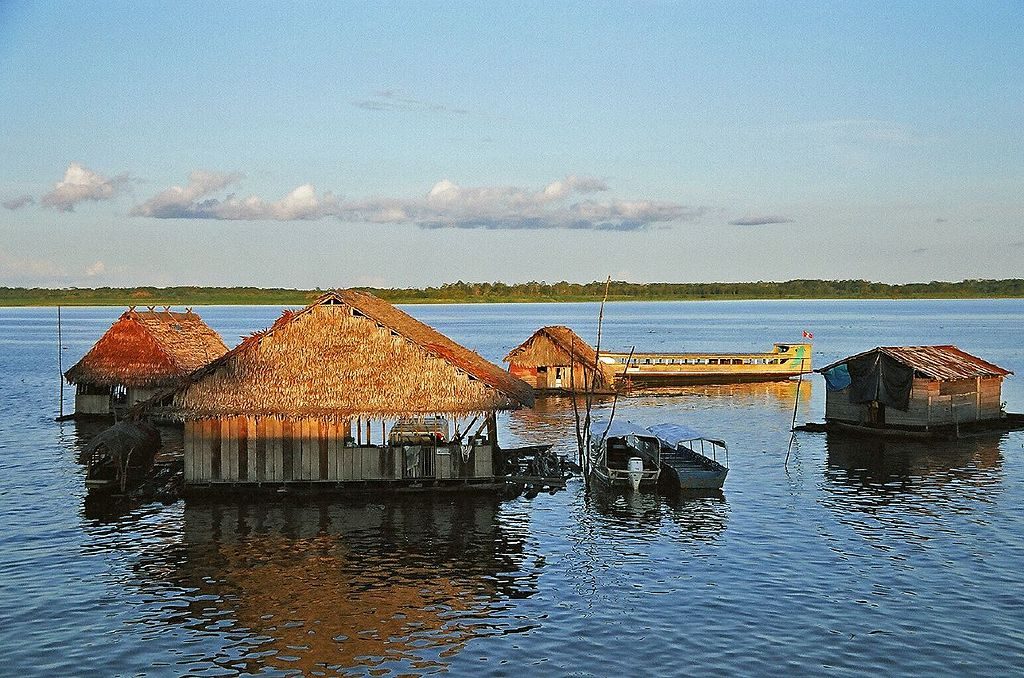
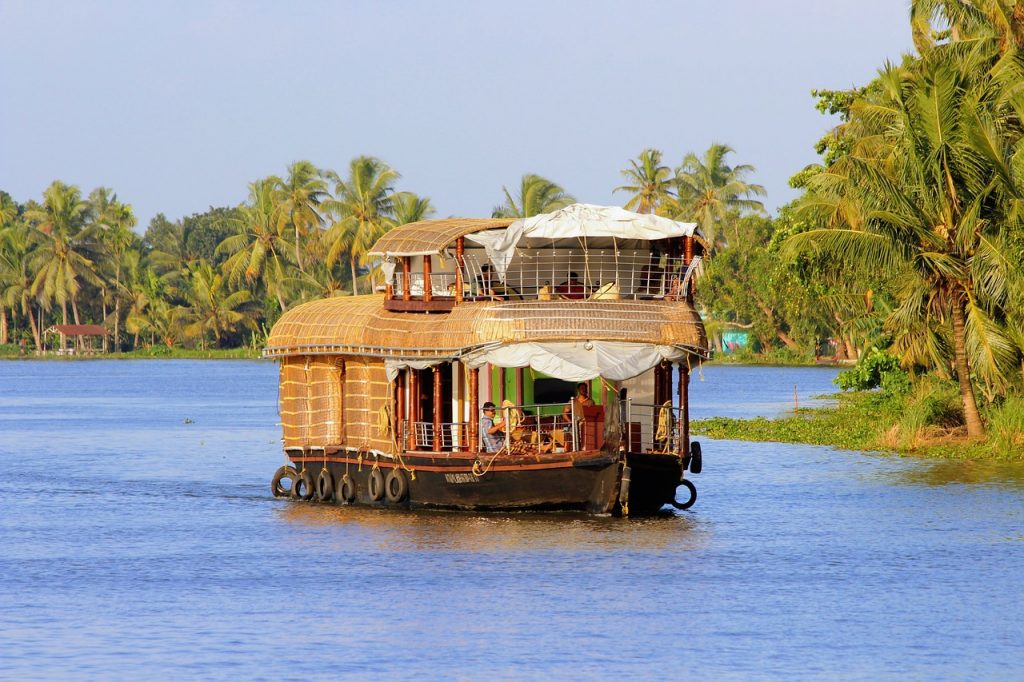

Agriculture
With saltwater intrusion into low lying agricultural fields, there are a couple of directions that are being worked on to maintain production in spite of brackish waters. One of the solutions put forth is to transition farmers from soil-based systems to aquaculture systems. This is happening in Asia, where many rice farmers are turning to shrimp production as salinity increases[5]. This has not necessarily been an ecologically beneficial endeavor, but with the application of permaculture design principles to the already transitioning populations from rice farming to brackish water aquaculture farming, there could be some creative solutions that are simultaneously beneficial ecologically, agriculturally, and economically for regions where traditional crops like rice are now becoming unfeasible.
Another potential is the development of salt-adapted varieties of crops, as well as breeding current saltwater plants to be more useful for humans. This work is happening, with one example currently going on in the Southern Indian state of Tamil Nadu at the M.S. Swaminathan Research Foundation. They currently have 350 halophytes (salt adapted species) that are candidates to be bred into crops in the future[6].
This brings up interesting questions about the potential of genetically modified crops to play a role. Normally from the permaculture perspective, genetically modified organisms are considered harmful to life. There are a lot of reasons for this belief, but one of the main ones is that the science is just not being used responsibly by corporations and is primarily a tool for greater profits. This has lead to some very unsavory GMO developments like terminator seeds that deny farmers the ability to save their own seeds, or species bred to use with a specific herbicide brand so the crop’s planting is integrated with chemical use by its very nature.
But in a world where the development of salt resistant food crops using genetic modification could happen at the hands of non-profit entities who are pledged to work for the common good, then the development of food staples that can be grown in saltwater could enable people to stay on their lands instead of migrating away as fields become saline. Perhaps this can also be accomplished by conventional non-GMO breeding methods in the given time frame. As it stands now, seas are rising and a lot of people’s livelihoods are becoming more and more marginal on the edge of fresh and saltwater. It’s an important question to ponder.
In other flooding situations that don’t include brackish water or just have seasonal intrusion of brackish water, there are other solutions. Changing elevations is a common practice in many permaculture designed systems, and there are many examples where wetland ecosystems have been made agriculturally productive, like the well known chinampa systems of Southern Mexico. Soil from the bottoms of marshes was piled onto floating rafts that were eventually rooted into placed and became a network of islands and peninsulas interspersed with canals. These systems have been in place in Mexico for nearly a millennium and have proven their ability to turn wetlands into productive agricultural areas.
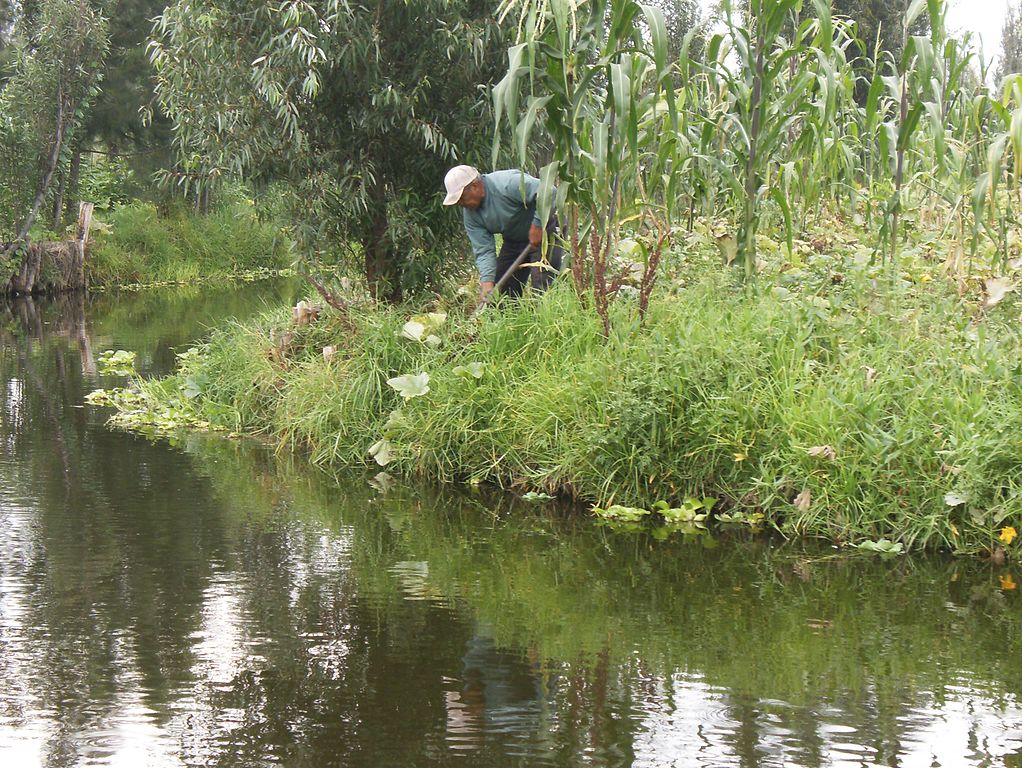
This same strategy can be applied in a less intensive way by small farmers seeking to get a head start in getting plants established in seasonally inundated fields. The pictures below show the adaptation strategies documented by the Development Research Services and Communication Centre in West Bengal, India. Plants are begun in bags, planted out on mounds, and then the bags can be breached to allow roots to enter the soil as the water level drops.
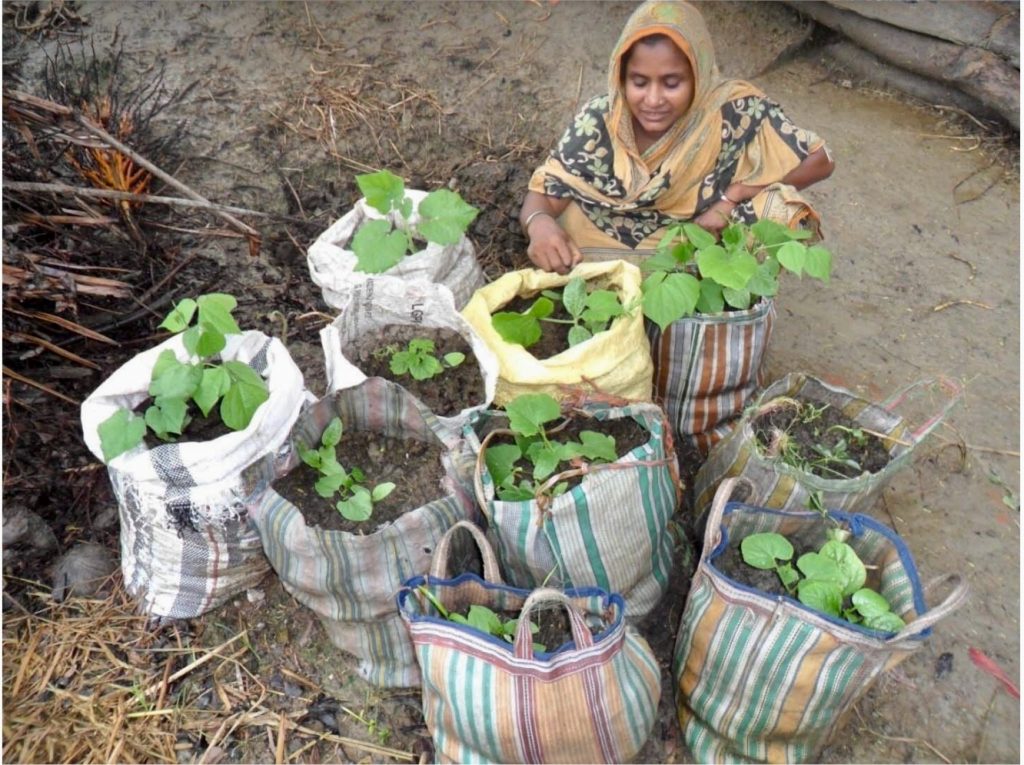

Water supply
Groundwater salinity is another ill effect of rising seas and the infiltration of brackish water further inland. People who rely on wells, especially shallow wells, for their primary water supply may find that the aquifer has become polluted by salt water. This is an irreversible decline in water quality for people in coastal locations and other permanent sources need to be developed.
Rainwater collection and storage is the best solution in salt water environments, in order to intercept water before it makes contact with the salty ground level. Rainwater catchment systems take many forms, and many innovations have and are continually being made by people practicing permaculture and others.
In-ground storages are only feasible on high ground which is not subject to saltwater infiltration, so in most situations on wet lowlands, containerized water storage is necessary. In areas with high rainfall, a simple structure can provide water for domestic use as is seen below in this picture provided by the Development Research Services and Communication Centre in West Bengal, India.
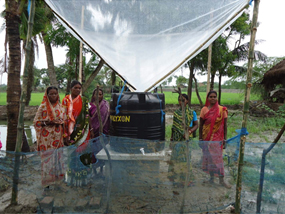
It is beyond the scope of this book to outline the entire teachings on permaculture water systems, but there are many other design features that are commonly used in permaculture systems that can assist in making the most out of fresh water before it is mixed with brackish water. These include greywater systems, constructed wetlands, and clay pot irrigation to name a few.
Regional Scale Mitigation
This issue is too big to go through completely within the scope of this text, as there will need to be a restructuring of coastal-based civilization around the planet as waters rise through this century and beyond. About 1/10 of humanity lives in low lying coastal regions[7], so the scale of the restructuring as waters rise is overwhelming.
Some areas will be able to erect mega dikes and seawalls like was undertaken in Holland beginning in the 1300’s. But those areas will be wealthier nations that can afford to undertake massive infrastructure projects. The energy intensity of projects of this scale makes them unaligned with the permaculture principle of “Use Small and Slow Solutions”, but there may in the future be projects at scales like this that do utilize permaculture design methodologies.

Aside from large scale infrastructure projects and mass relocation of populations, there are many small scale changes that can mitigate the issue in at risk regions. For example, if people are processing their wastewater in localized small scale systems, then that lessens the impact on centralized wastewater treatment plants located at shorelines. Many of the common permaculture practices already have positive downstream impacts because an aim in permaculture is to create site based systems and rely less on centralized power and water grids.
The most effective undertakings at the regional level at this point are planning and zoning regulations that take into account the inevitable sea level rise and increase in flood events. If governments could take this threat seriously and realize that sea level rise does not stop at the end of this century but keeps on rising throughout the remainder of the foreseeable human experience, then wise choices could be made about placement of elements within the landscape. This requires a full societal reckoning with the situation, and an intentional migration of infrastructure to higher elevation, with rules, regulations, and enforcement that reflect that.
Vision of future coastlines
It could be that all new strategies and patterns for human sustenance can be developed as the oceans rise and population pressure forces people to innovate in these environments. With a mixture of large scale infrastructure projects, stilted homes, raised islands, aquaculture, salt adapted crops, and the breeding of saltwater species into usable crops, people can continue to make use of the coastlines as they creep steadily higher up onto land.
This is not a bright future, as coastal populations all over the planet cope with their particular dynamics and ecosystems change and impact countless species, but there will be room for innovation and creative adaptation within it all, and that’s the aspect where the permaculture design system places its focus. Climate resilience means seeing the changes coming, and planning resilient systems that can cope and even thrive within the changes.
- “Is Sea Level Rising?”. IPCC Fourth Assessment Report: Climate Change 2007. Intergovernmental panel on Climate Change. Web. Mar. 2018 https://www.ipcc.ch/publications_and_data/ar4/wg1/en/faq-5-1.html ↵
- “Sea Level Rise”. National Geographic. Web. Mar. 2018 https://www.nationalgeographic.com/environment/global-warming/sea-level-rise/ ↵
- Doyle, Alister. “Carbon Emissions Highest They Have Been in 66 Million Years”. Scientific American. Web. Mar. 2018 https://www.scientificamerican.com/article/carbon-emissions-highest-they-have-been-in-66-million-years/ ↵
- Cornwall, Warren. “As sea levels rise, Bangladeshi islanders must decide between keeping the water out—or letting it in”. Science. 1 Mar. 2018. Web. http://www.sciencemag.org/news/2018/03/sea-levels-rise-bangladeshi-islanders-must-decide-between-keeping-water-out-or-letting ↵
- Nair, A. “Brackish Potential for a Shrimp Farming Surge in India”. The Fish Site. 22 October 2017. Web. Mar. 2018 https://thefishsite.com/articles/untapped-brackish-water-sites-may-provoke-a-shrimp-farming-surge-in-india ↵
- Daigle, Katy. “Salt-tolerant Plants Eyed As Crops of the Future as Sea Level Rises.” The Associated Press. 17 Aug. 2015. Canadian Broadcasting Corporation. Web. Mar. 2018 http://www.cbc.ca/news/technology/saltwater-plants-1.3193535 ↵
- Greenfieldboyce, Nell. “Study: 634 Million People at Risk from Rising Seas”. National Public Radio. 28 Mar. 2007. Web. Mar. 2018 https://www.npr.org/templates/story/story.php?storyId=9162438 ↵

